How about a deliciously crispy spelt bread for breakfast, made only with sourdough, without any yeast or other ingredients? With a great crust and unique taste? This easy recipe for pure spelt sourdough bread will surely please you. It takes a bit of time - but almost all of it is spent on rising.
Taste and Occasion
I have noticed it myself in recent months. Once you've baked spelt bread without yeast - like in this recipe with your sourdough - you don't want to "go back". By the way: Here's my tutorial on how you can make sourdough yourself. Homemade bread tastes so much better than store-bought. That moment when you take the bread out of the oven, the crust is wildly cracked, the crumb is moist and soft, and the smell of freshly baked bread wafts through the kitchen is unique!
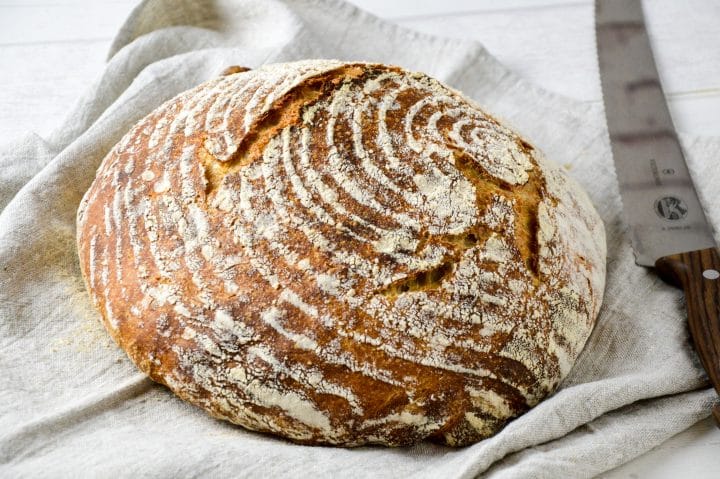
Ingredients
As the name already suggests, this super delicious spelt sourdough crusty bread is baked from 100% spelt flour. As a leavening agent sourdough is used (and yes, since the question has come up several times, it's only 14 grams 😉 !). Sourdough breads beat those baked with industrial yeast in taste by lengths and are also longer shelf life. Essential in bread baking is steam. This results in your spelt bread developing the best possible crust. You can achieve this by using an oven with a steam function or by putting a heat-resistant bowl with hot water into the oven. In this case, I advise you to also use a pizza stone, as it will continuously give off heat to the bread as it bakes.
The problem is that most ovens without a steam function are too leaky to hold the steam from the pan for a long time. It works better if you bake spelt bread in a massive, closed pot. There, the spelt bread can bake in its own steam. In addition, the walls of the pot constantly give off baking heat to the dough.
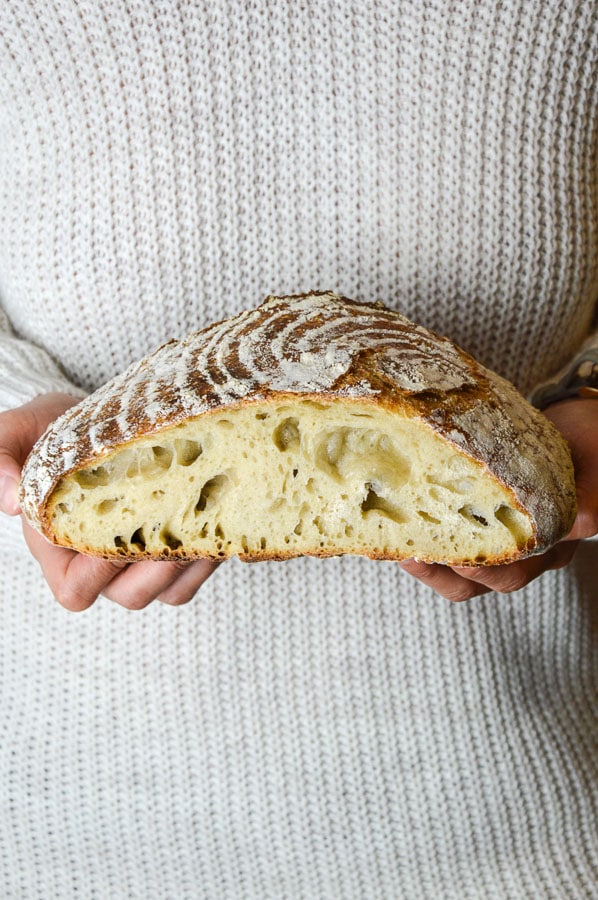
How to make the Pure Spelt Sourdough Bread
Let's start with the preparation: First of all, dissolve the salt in the water and knead all the ingredients in a food processor with a kneading function or by hand to form a uniform dough. The dough is ready when it can be easily separated from the edge of the bowl or when it separates itself during mixing.
Now, place the dough in a bowl and cover it with a damp cloth. Then let it rest for 24 hours at room temperature. Stretch and fold every 6-8 hours. After 24 hours, fold the dough one last time, take it out of the bowl, and carefully shape it into a ball. Make sure that as little as possible escapes from the gas. Then let rise, end (the side you folded on) down, for 1 more hour at room temperature in a well-floured proofing basket. You do not need to cover the dough with a cloth. If you don't have a proofing basket, a bowl lined with a floured cloth will do.
After this, heat the oven together with the Roman pot or Dutch oven to 480°F/250°C. When the oven is well preheated, put the bread into the pot with the end facing up. Put the lid on and bake at 480°F/250°C for 10 minutes. Then turn the oven to 450°F/230°C and bake for another 30 minutes. Then bake for another 10 minutes without the lid. The crust will be the best brown and crispy during this time.
In the end, remove the bread from the oven and let it cool on a rack before cutting it. The bread should be able to breathe all around.
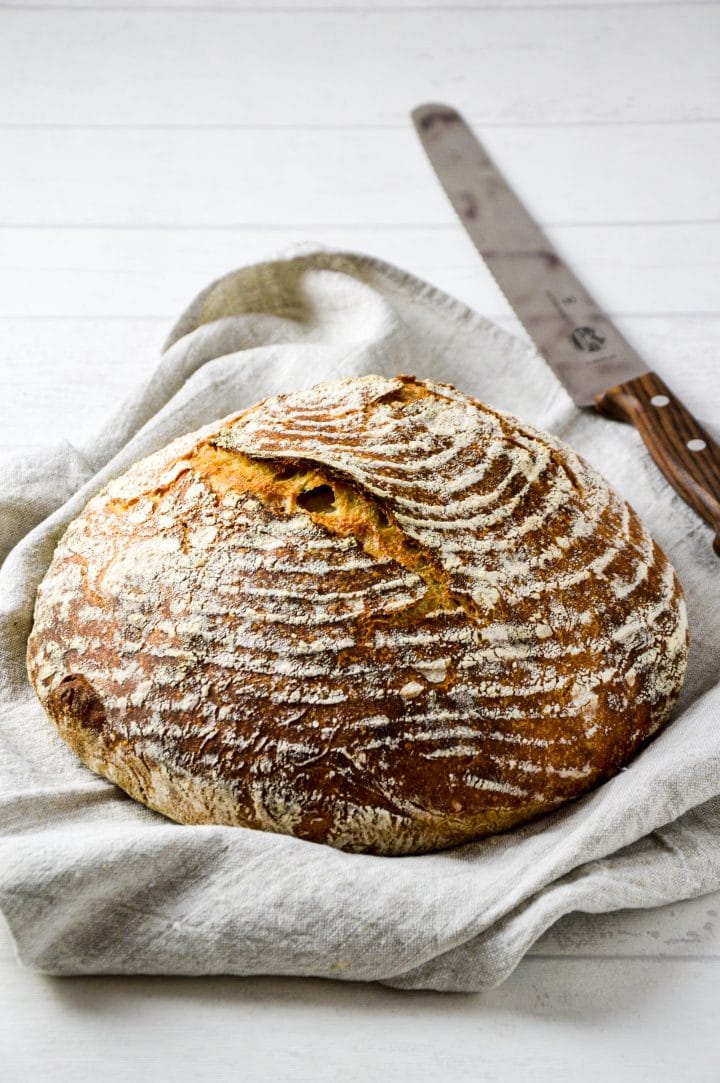
Top Tip
I use a Dutch Oven (a heavy cast iron pot) for baking. You can also use a classic ceramic Roman pot or a metal roaster. In a pinch, a heatproof saucepan with a lid will also work. The more solid the part, the better.
Recipe Card
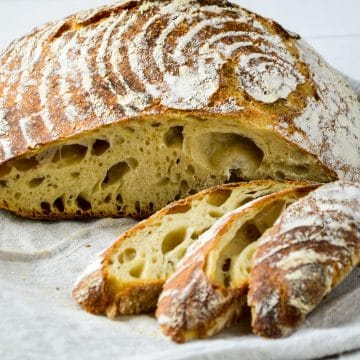
Pure Spelt Bread with Sourdough
Ingredients
- 700 grams (6 cups) spelt flour type 630
- 465 milliliters (2 cups) water
- 20 grams (1 tablespoons) salt
- 14 grams (1 tablespoons) sourdough starter
Instructions
- Dissolve the salt in the water and knead all the ingredients in a food processor with a kneading function or by hand to form a uniform dough. The dough is ready when it can be easily separated from the edge of the bowl or when it separates itself during mixing.
- Place the dough in a bowl and cover it with a damp cloth. Then let it rest for 24 hours at room temperature. Stretch and fold every 6-8 hours. After 24 hours, fold the dough one last time, take it out of the bowl, and carefully shape it into a ball. Make sure that as little as possible escapes from the gas.
- Then let rise, end (the side you folded on) down, for 1 more hour at room temperature in a well-floured proofing basket. You do not need to cover the dough with a cloth. If you don't have a proofing basket, a bowl lined with a floured cloth will do.
- Heat the oven together with the Roman pot or Dutch oven to 480°F/250°C.
- When the oven is well preheated, put the bread into the pot with the end facing up. Put the lid on and bake at 480°F/250°C for 10 minutes. Then turn the oven to 450°F/230°C and bake for another 30 minutes. Then bake for another 10 minutes without the lid. The crust will be the best brown and crispy during this time.
- Remove the bread from the oven and let it cool on a rack before cutting it. The bread should be able to breathe all around.
Notes
- Timing: You should start the recipe 1 day and 3 hours before you want the bread to be ready. On the baking day itself, you will need about 2 hours plus the cooling time.
- Tip on rising time: The times given are only guidelines, as the actual rising time depends on various factors that are never the same (room temperature, moisture content of the flour, etc.) It is, therefore, best to follow the finger test. It's easy to press a finger about 1-2 cm deep into the dough. Within 10 seconds, the dough should shrink so much that only a slight indentation of a few millimeters remains. Then the bread is just ready to bake. The bread is already overproof if the indentation does not form (almost) at all. If the dimple springs back almost immediately, it still needs to rise a bit.
- Tip on baking time: The baking time can vary depending on the oven, the dough's temperature, and other factors. Using an oven thermometer is the easiest way to check if your bread is ready. Simply insert it into the bread when you remove the lid. Thermometers are heat resistant and can stay in the oven until the bread is done. When the core of the bread is between 192°F/96°C and 196°F/98°C, it is perfect.
Ingredient substitutions
Variations
And now I wish you bon appétit and a lot of fun with your homemade spelt sourdough bread without yeast! By the way, a delicious alternative is also the no yeast sourdough bread 🙂.
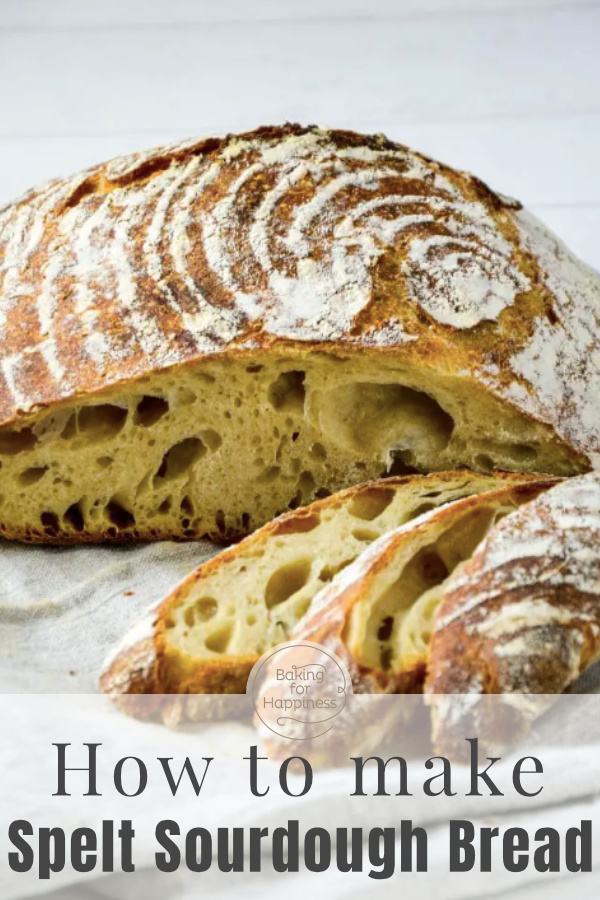
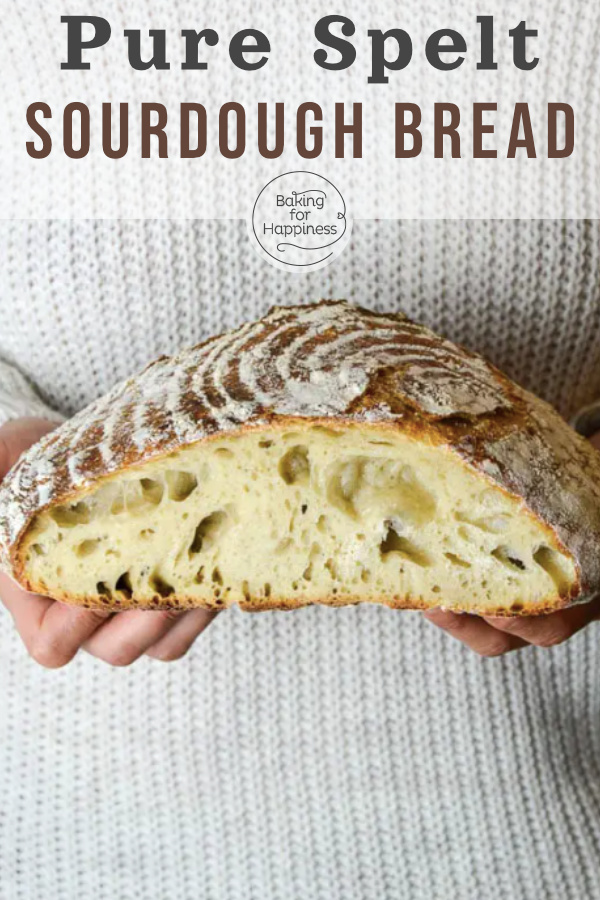
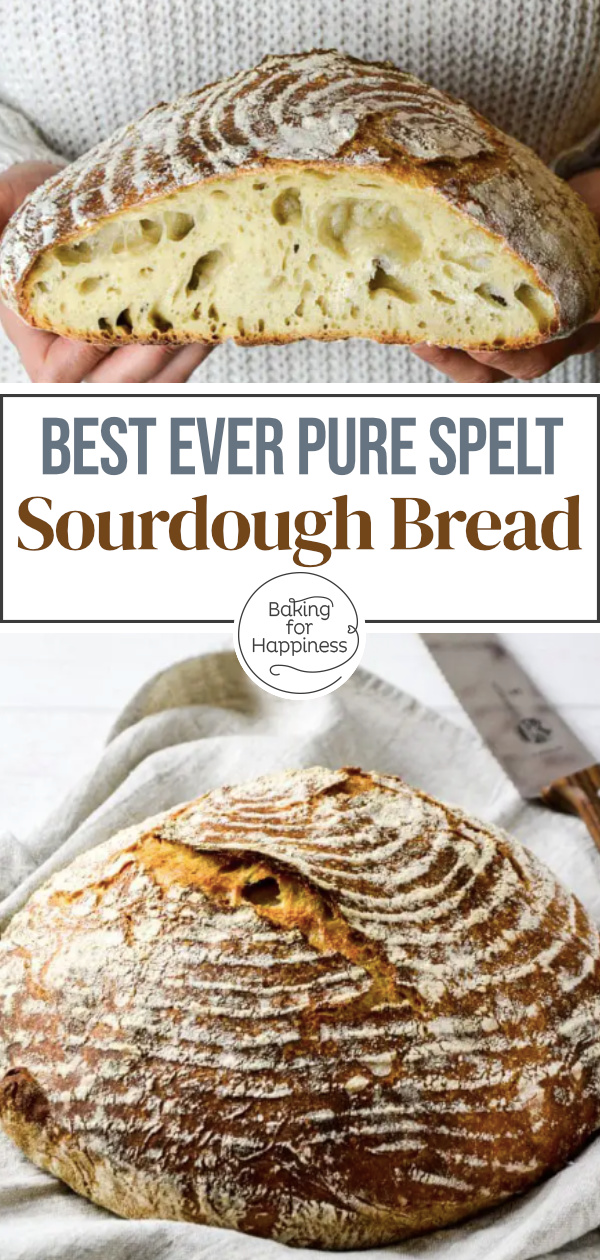

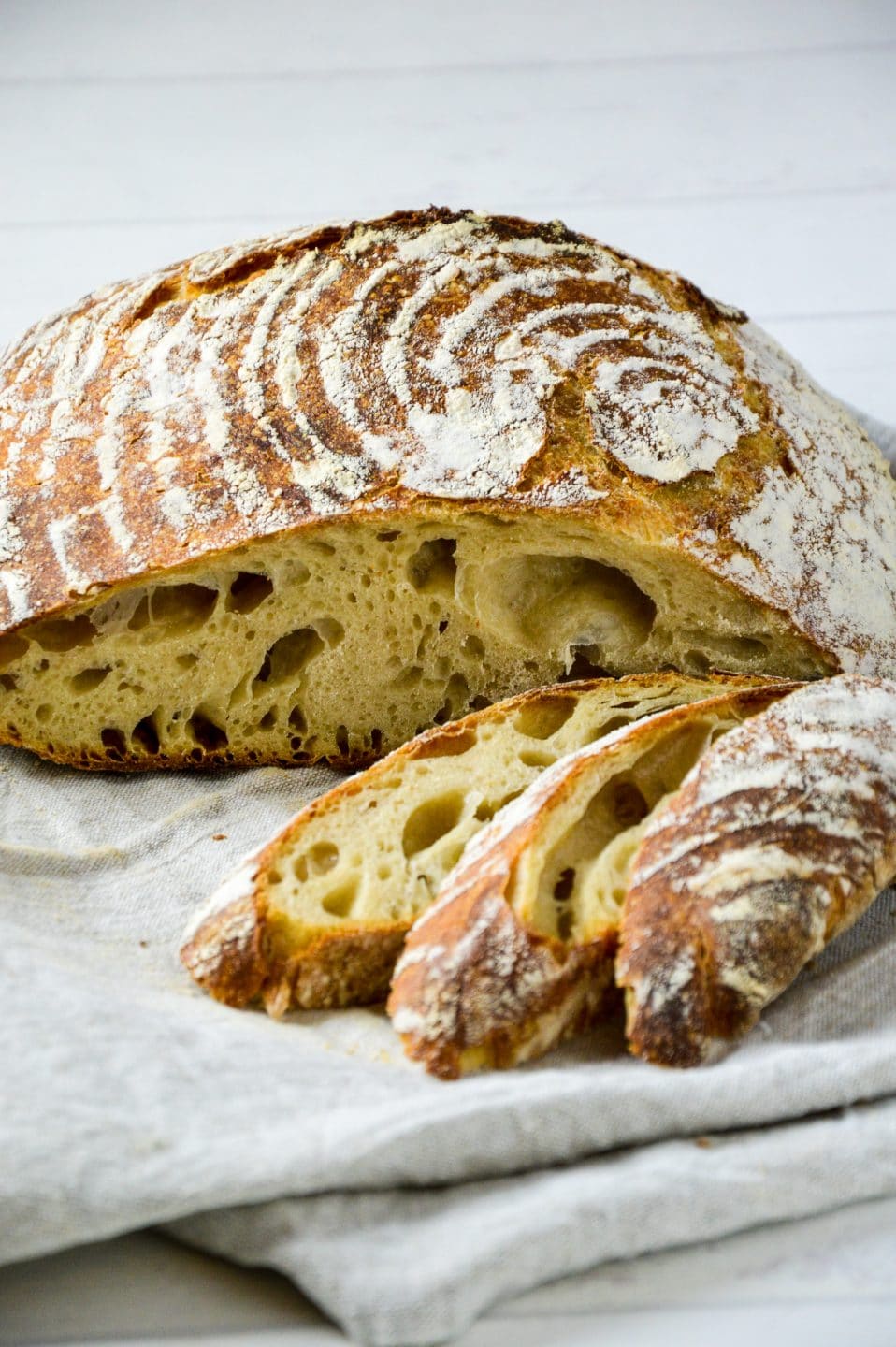
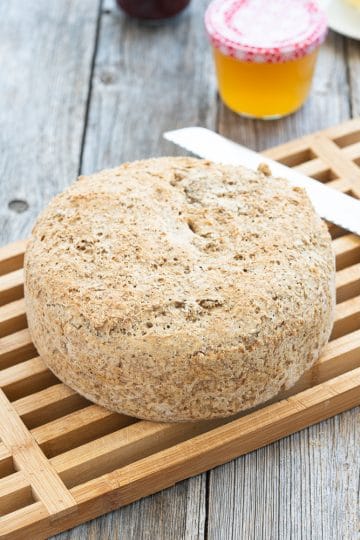
Comments
No Comments